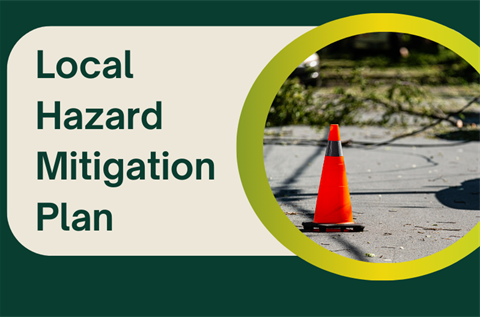Local Hazard Mitigation Plan

As required by FEMA every five years, Lakewood is in the process of updating our Local Hazard Mitigation Plan, using residents' feedback to help us identify risks and take proactive measures to protect lives and property during disasters.
What is a Local Hazard Mitigation Plan (LHMP)?
A Local Hazard Mitigation Plan (LHMP) is designed to strengthen community resilience by reducing vulnerability to damage, loss, or disruption caused by natural or human-made hazards. The planning process involves evaluating the risks posed by various hazards, identifying community vulnerabilities, cataloging available resources for risk reduction, and developing mitigation strategies to enhance the city’s resilience.
The LHMP serves as a critical guide for municipalities to improve community resilience. Municipalities are required to develop, adopt, maintain, and periodically update their LHMPs, which must undergo review by the California Governor’s Office of Emergency Services (Cal OES) and receive approval from the Federal Emergency Management Agency (FEMA). To ensure their effectiveness, FEMA requires LHMP updates every five years.
What are some hazards the LHMP helps protect against?
- Earthquake
- Air Quality
- Disease Outbreak
- Urban Fire
- Windstorm
- Extreme Temperatures
- Dam Failure
- Adversarial Events
- Power Loss
- Drought
- Hazardous Materials Release
- Mass Transportation Incident
- Flood
Why is Hazard Mitigation Planning Important for Lakewood?
Hazard mitigation simply means actions that reduce the potential for negative impacts from future disasters. Mitigation actions reduce future damage, losses and casualties. Effective mitigation planning will help Lakewood deal with natural and human-caused hazards realistically and rationally. It will help differentiate specific locations in Lakewood where the level of risk varies per hazard type and identify areas where one or more hazards apply.
The Hazard Mitigation Plan provides guidance in implementing cost effective ways to reduce such risks. Mitigation planning strikes a pragmatic middle ground between underestimating the potential for major hazard events on one hand and unnecessarily overreacting to the potential for disasters on the other hand.
The Federal Emergency Management Agency (FEMA) requires each local government entity to adopt a multi-hazard mitigation plan to remain eligible for future pre- or post-disaster FEMA mitigation funding. Thus, an important objective in developing this plan is to maintain eligibility for FEMA funding and to enhance Lakewood’s ability to qualify for future FEMA mitigation funding.
FEMA’s mitigation planning requirements for communities are based on the Disaster Mitigation Act of 2000, which requires every state and local government to prepare a hazard mitigation plan, which includes the following steps:
- Conduct an assessment of the natural hazards that pose a threat to the jurisdiction;
- Determine the potential impact of these hazards;
- Create a hazard mitigation plan to mitigate these hazards; and
- Implement the hazard mitigation plan to reduce the impacts of natural disasters.
This Hazard Mitigation Plan is specifically designed to help Lakewood gather the data necessary to compete successfully for future FEMA funding of mitigation projects. FEMA requires that all FEMA-funded hazard mitigation projects be “cost-effective” (i.e., the benefits of a project must exceed the costs).
Benefit-cost analysis is thus an important component of mitigation planning, not only to meet FEMA requirements, but also to help evaluate and prioritize potential hazard mitigation projects in Lakewood, regardless of whether funding is from FEMA, state or local government or from private sources.
Hazard mitigation planning is applicable to the Lakewood community as a whole, including not only City-owned facilities but also the entire built environment of buildings and infrastructure.